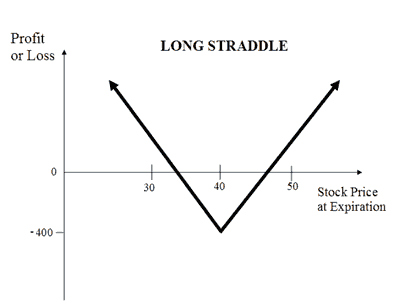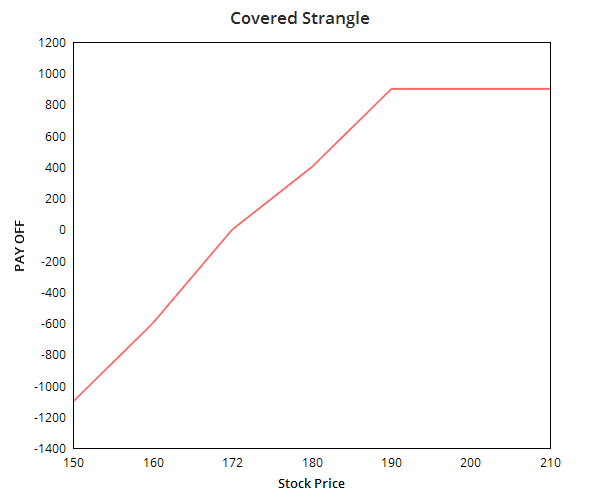 Zerodha (Trading & Demat Account)
Zerodha (Trading & Demat Account)
FREE Equity Delivery and MF
Flat ₹20/trade Intra-day/F&O
 Zerodha (Trading & Demat Account)
Zerodha (Trading & Demat Account)
FREE Equity Delivery and MF
Flat ₹20/trade Intra-day/F&O

|
|
Compare Long Straddle (Buy Straddle) and Covered Strangle options trading strategies. Find similarities and differences between Long Straddle (Buy Straddle) and Covered Strangle strategies. Find the best options trading strategy for your trading needs.
| Long Straddle (Buy Straddle) | Covered Strangle | |
|---|---|---|
 |
 |
|
| About Strategy | The Long Straddle (or Buy Straddle) is a neutral strategy. This strategy involves simultaneously buying a call and a put option of the same underlying asset, same strike price and same expire date. A Long Straddle strategy is used in case of highly volatile market scenarios wherein you expect a big movement in the price of the underlying but are not sure of the direction. Such scenarios arise when company declare results, budget, war-like situation etc. This is an unlimited profit and limited risk strategy. The profit earns in this strategy is unlimited. Higher volatility results in higher profits. The maximum loss is limited to the net premium paid. The max loss occurs when underlying asset price on expire remains at the strike price. ... Read More | The covered strangle option strategy is a bullish strategy. The strategy is created by owning or buying a stock and selling an OTM Call and OTM Put. It is called covered strangle because the upside risk of the strangle is covered or minimized. The strategy is perfect to use when you are prepared to sell the holding or bought shares at a higher price if the market moves up but would also is ready to buy more shares if the market moves downwards. The profit and in this strategy is unlimited while the risk is only on the downside. |
| Market View | Neutral | Bullish |
| Strategy Level | Beginners | Advance |
| Options Type | Call + Put | Call + Put + Underlying |
| Number of Positions | 2 | 3 |
| Risk Profile | Limited | Limited |
| Reward Profile | Unlimited | Limited |
| Breakeven Point | 2 break-even points | two break-even points |
| Long Straddle (Buy Straddle) | Covered Strangle | |
|---|---|---|
| When to use? | The strategy is perfect to use when there is market volatility expected due to results, elections, budget, policy change, war etc. |
A covered strangle strategy can be used when you are bullish on the market but also want to cover any downside risk. You are prepared to sell the shares on profit but are also willing to buy more shares in case the prices fall. |
| Market View | Neutral When you are not sure on the direction the underlying would move but are expecting the rise in its volatility. |
Bullish The Strategy is perfect to apply when you're bullish on the market and expecting less volatility in the market. |
| Action |
|
Buy 100 shares + Sell OTM Call +Sell OTM Put The covered strangle options strategy can be executed by buying 100 shares of a stock while simultaneously selling an OTM Put and Call of the same the stock and similar expiration date. |
| Breakeven Point | 2 break-even points A straddle has two break-even points. Lower Breakeven = Strike Price of Put - Net Premium Upper breakeven = Strike Price of Call + Net Premium |
two break-even points There are 2 break-even points in the covered strangle strategy. One is the Upper break even point which is the sum of strike price of the Call option and premium received while the other is the lower break-even point which is the difference strike price of short Put and premium received. |
| Long Straddle (Buy Straddle) | Covered Strangle | |
|---|---|---|
| Risks | Limited The maximum loss for long straddle strategy is limited to the net premium paid. It happens the price of underlying is equal to strike price of options. Maximum Loss = Net Premium Paid |
Limited The risk on this strategy is only on the downside when the price moves below the strike price of the Put option. |
| Rewards | Unlimited There is unlimited profit opportunity in this strategy irrespective of the direction of the underlying. Profit occurs when the price of the underlying is greater than strike price of long Put or lesser than strike price of long Call. |
Limited The maximum profit on this strategy happens when the stock price is above the call price on expiry. The profit is the total of the gain from buying/selling stocks and net premium received on selling options. |
| Maximum Profit Scenario | Max profit is achieved when at one option is exercised. |
You will earn the maximum profit when the price of the stock is above the Call option strike price on expiry. You will be assigned on the Call option, would be able to sell holding shares on profit while retaining the premiums received while selling the options. |
| Maximum Loss Scenario | When both options are not exercised. This happens when underlying asset price on expire remains at the strike price. |
The maximum loss would be when the stock price falls drastically and turns worthless. The premiums received while selling the options will compensate for some of the loss. |
| Long Straddle (Buy Straddle) | Covered Strangle | |
|---|---|---|
| Advantages | Earns you unlimited profit in a volatile market while minimizing the loss. |
|
| Disadvantage | The price change has to be bigger to make good profits. |
|
| Simillar Strategies | Long Strangle, Short Straddle | Long Strangle, Short Strangle |

Add a public comment...

FREE Intraday Trading (Eq, F&O)
Flat ₹20 Per Trade in F&O
|
|